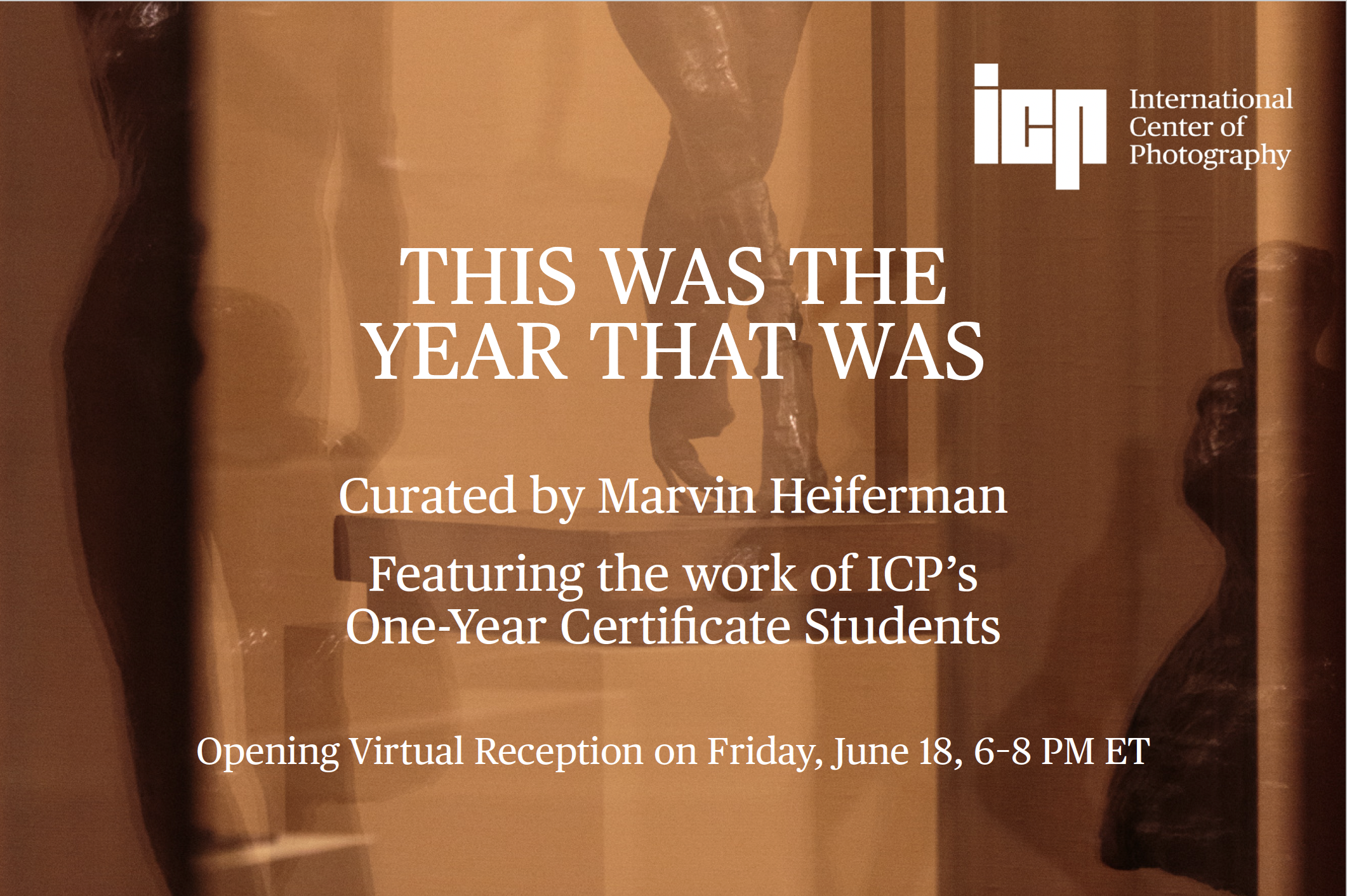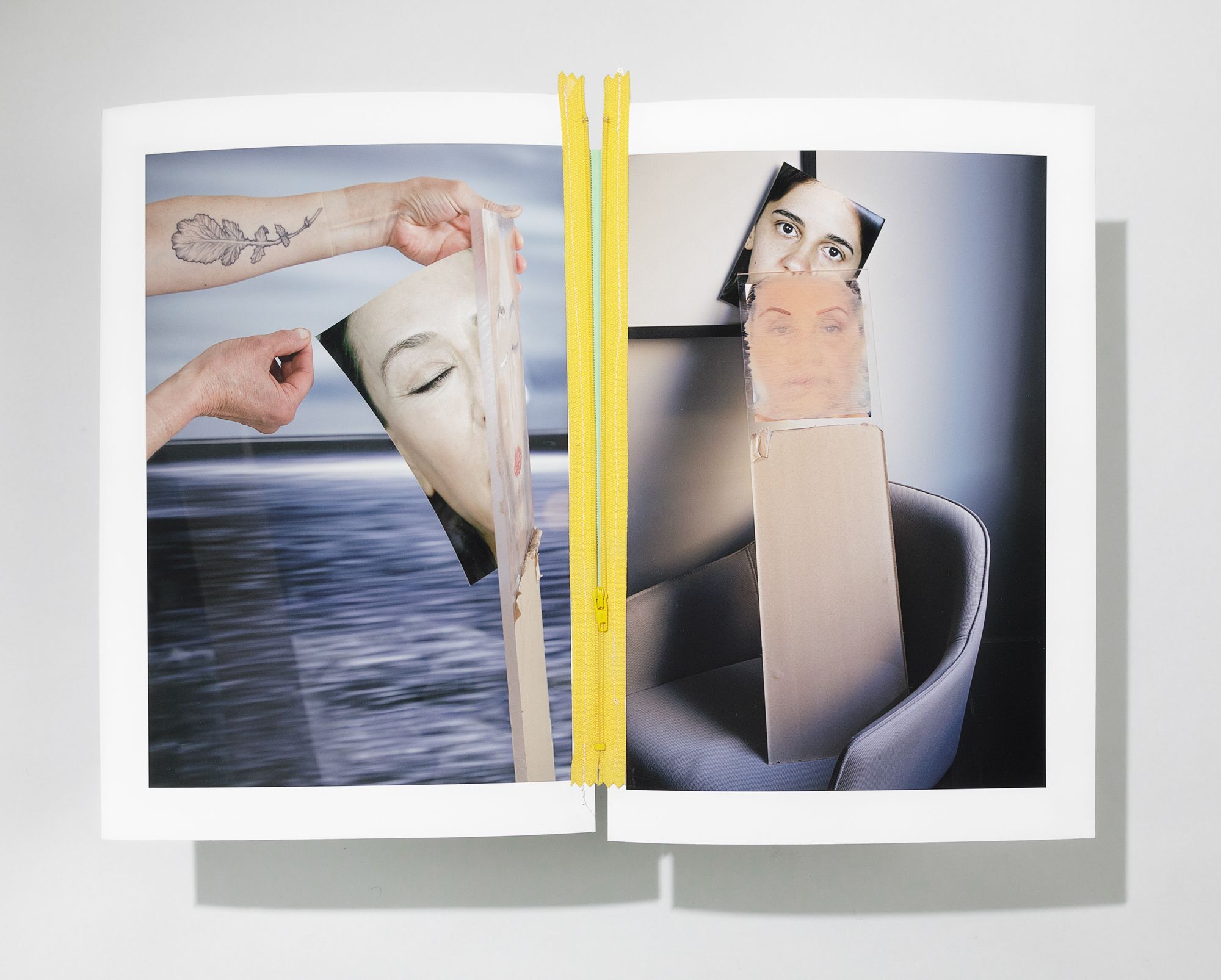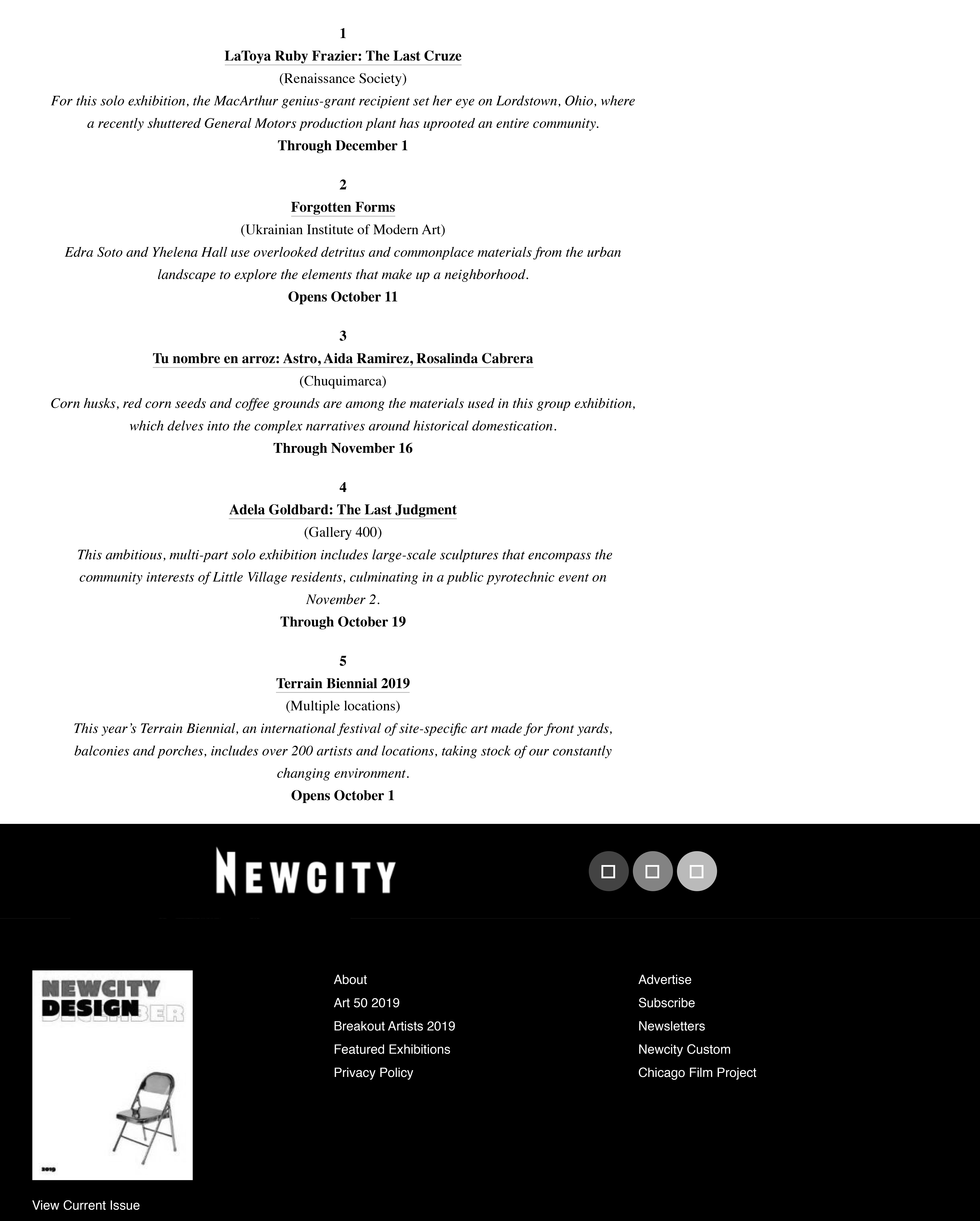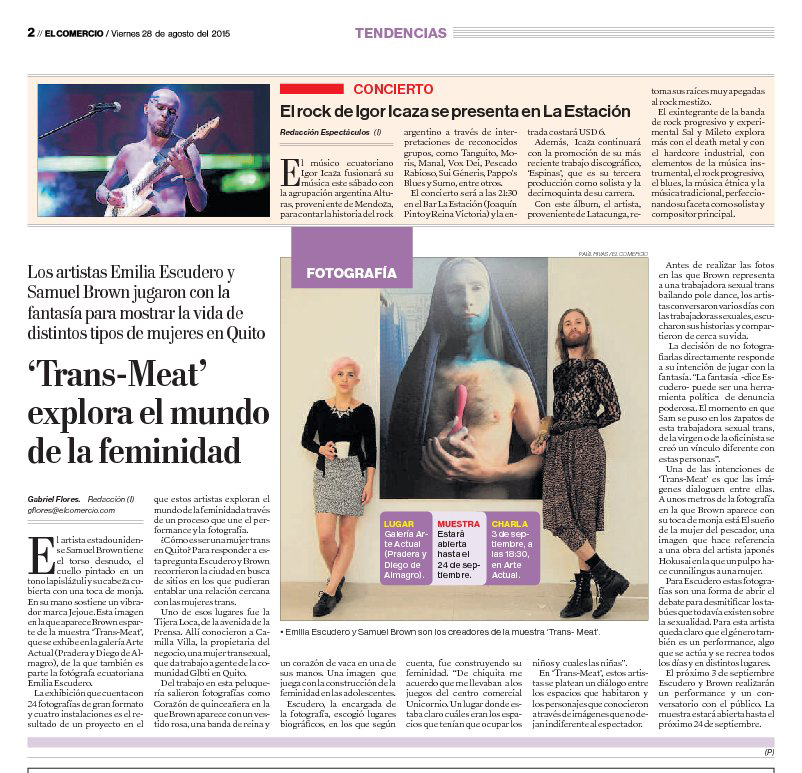EXHIBITIONS + PRESS + INTERVIEWS
Exhibition: Brotes
Sankalpa, Madrid, 2022



Para la muestra Brotes, la producción artística es un florecimiento mutuo. Después del letargo de la pandemia, estamos reaprendiendo a florecer en un mundo desconocido. Conectamos con un nuevo sentido de normalidad y encontramos nuevas raíces con otros seres y con el planeta.
Las artistas Clementine, Anne Baanan, Ouka Leele, Astro, María Rosenfeldt, Kammala Studio abordan a la primavera como una transición explosiva, irreverente, salvaje, contemplativa y potente. A través del collage, fotografía análoga y digital, acuarela y eco-moda, las artistas transforman al jardín en un laboratorio alquímico y en la tierra fértil de los sueños.
Exhibition: Aftermaths
Charlotte Street Foundation, Kansas City, 2021Curated by Jameson Paige






Charlotte Street Foundation presents Aftermaths, a group exhibition featuring artists with attachments to Latin America and the Arab world who engage photographic and filmic archives in order to unfurl the complexity of history and its visual records. Invested in postcolonial politics and ongoing struggles for liberation, the projects by Astro Escudero (Chicago, IL), Rami George (Philadelphia, PA), Gonzalo Reyes Rodriguez (Minneapolis, MN), and Sanaz Sohrabi (Montreal/Chicago, IL) help us understand how images have been used both to suppress and to bolster people’s freedom and autonomy.
PH: Eschempf
Read More
Exhibition: Strawberry Moon
Baby Blue Gallery, Chicago, 2021
Curated by Roland Santana



Rupture and Baby Blue Gallery proudly present Local Selection Vol. 1 Strawberry Moon. This is the first group exhibition curated by Roland Santana, artist and creator of the Rupture database. Hosted by Baby Blue Gallery and located inside MANA Contemporary, all artists included in this show are based in Chicago and identify as BIPOC. Rupture was created as a platform to discover talent and catalyze opportunities within the fine art sectors of the city through workshops, exhibitions and events. The first of Rupture exhibition’s is subtitled Strawberry Moon, a name used by the Algonquin, Ojibwe, Dakota, and Lakota peoples to mark the ripening of strawberries, and blooming flowers during the full moon in June. It is a time of great abundance for many.
The fifteen artists include: Malik Purvis, Hope Wang, Angel Harrold, Saúl Palos Rodriguez, Ashley King, Marcelo Eli, Salvador Dominguez, Eseosa Edebiri, Marina Ross, Astro, Roland Santana, Erol Harris, Yesenia Bello, Juan Neira and Leaf Silver. The work is a mix of disciplines that comes together harmoniously to bloom for the summer season.
Rupture is a growing database website that is open for submissions indefinitely. If you are a BIPOC artist in Chicago, submit your work via rupturechicago.com.
PH: Rupture
Virtual Exhibition: This Was the Year That Was
International Center of Photography
One Year Certificate Program, 2021
Curated by Marvin Heiferman


Students who chose to enter the 2020-2021 one-year certificate program last year—in the midst of a pandemic, lockdowns, mounting political polarization, and widespread calls for social justice—had one thing in common. Each chose to commit almost a year of their lives to exploring what lens-based imaging meant to them, as well as those who might encounter their work. But if photography is a medium that, under more normal circumstances, benefits from proximity, the picture makers featured here had little choice but to produce work in relative isolation, at a distance from their instructors and peers, and to share what they made remotely. As many in visual and media culture were debating how the pandemic should best be represented—as misinformation, photo-ops, and memes ranging from the pernicious to the ridiculous spread like the COVID-19 virus itself—the challenge this year’s graduates faced was to make work that, whatever its concerns and subject matter might be, was thoughtful and had presence in a time of unprecedented absence and loss.
This Was the Year That Was features work by ICP's One-Year Certificate students in Creative Practices and Documentary Practice and Visual Journalism representing a range of visual media from photography to mixed media. The exhibition is co-curated by ICP faculty member Marvin Heiferman and the one-year certificate program chairs Karen Marshall and Darin Mickey. View the virtual showcase.
Poster design: by Hillary Halter
Press: New Media Arts Fellowship, ICP
International Center of Photography, 2021



The Sagrada Maldita, the collaborative and multimedia project with Alejandra Gutierrez (MEX) and Astro Escudero (EC) was awarded the New Media Fellowship at the International Center of Photography.
Exhibition: Tu Nombre en Arroz
Chuquimarca Projects, Chicago, 2019Curated by John Guevara





In the Centro Histórico de Lima, along the Rimac river’s malecón, there is a street vendor selling pendants assembled from raw rice grains, clear glue, and tiny glass vials. The buyers of these pendants can request the vendor to ink in any name they wish on to each domesticated grain for a few soles. A tutorial video on how to make these pendants exists on Youtube, search: tu_nombre_en_arroz. In el malecón, with the faint burble of the river and con el olor de pollo rostizado, this souvenir made for lovers, tourists, and youth is advertised in big black capital letters on a white poster board sign with the words, “TU NOMBRE EN ARROZ”. Released from its dietary and economic utility, the rice grain, marked and purchased, turns into an object that holds a modest gesture of tender memory, place, and love. At least -that is a romantic read. Perhaps, the narrative and genre should be one of violence, horror, and obscurity to point to the systems within el centro Histórico de Lima.
Tu Nombre en Arroz is a group show featuring works from Astro, Aida Ramirez, and Rosalinda Cabrera. Corn husks, red corn seeds, and coffee grounds serve as the materials that point to historical domestication, construction of place, obscured narratives, and their inherent invented systems. For this show, the artists offer sensorial and architectural interventions to re-envision and continue investigating their works’ oral and organic materiality.
See more of Chuquimarca Projects (https://chuquimarca.com)
Press: New City Art: Top 5: Tu Nombre en Arroz
written by Kerry Kardoza, 2019


Exhibition: Defiance To Power
Justice Hotel, 6018 North, Chicago, 2019Curated by Erika Ordosgoitti and Carlos Salazar-Lermont




Defiance to Power is a selection of works that seeks to open paths to emancipation, questioning diverse expressions of power, either institutionalized (as the military and the police) or political, cultural, and social systems of domination (as sexism, phallocentrism, hetero-sexism, xenophobia and even indifference itself). These defying artworks are made by Latin American authors characterized for their critical stance towards the establishment, who often subject themselves and their bodies to high pressures in order to achieve what they seek: to make art an act of resistance.
Presented originally in Venezuela in the frame of the III Biennial of Contemporary Art of Los Andes (2014), Defiance to Power consisted of performances for the camera and documentation of performance art works. For this chapter in Chicago, we presented the work of Latin American artists currently based in the United States at the space of 6018 North.
Participating artists:
Regina José Galindo (Guatemala)
Carlos Martiel (Cuba)
Nadia Granados (Colombia)
Rocío Bolíver, La Congelada de Uva (México)
Deborah Castillo (Venezuela)
Sandra Vivas (Venezuela)
Amapola Prada (Perú)
Astro Escudero (Ecuador)
Erika Ordosgoitti (Venezuela)
Carlos Salazar-Lermont (Venezuela)
Exhibition: MFA Thesis Show
SAIC, Chicago, 2019



The culminating public presentation of more than 120 MFA candidates’ new and ambitious work. Students work for more than six months with three guest curators and 12 graduate curatorial assistants to envision the exhibition, an approach that allows for dialogue, process, and collaborative decision-making among the curatorial teams and artists.
Design by Xu Guanyu (https://www.xuguanyu.com)
Exhibition: Chromos / Carne : Trans-meat
Center of Contemporary Art (CAC), Selected Project, Ecuador, 2017





Trans-meat es la unidad artística entre fotografía y performance. Una artista nacional utiliza a la fotografía como el escenario de realización estética del performance y un expresionista extranjero usa al performance como lógica de construcción de la imagen. La rareza de un extranjero performando a la feminidad visibiliza y desafía nuestras concepciones locales sobre el género.
Alejándose de la tradición documental, Trans-meat crea un despliegue cromático por los espacios cotidianos de las mujeres de Quito. Un recorrido no-lineal del paisaje urbano plantea una experiencia femenina arraigada en el color y el espacio. ¿Acaso la historia del género no se escribe también en una peluquería, un mercado, un cuarto de motel, e incluso, una esquina transitada?
Publication: Center of Contemporary Art (CAC)
“Memoria Fotográfica,” 2017



Publication: Cartón Piedra
“Penando a lo Trans: San Roque Remix,” 2015
written by Guillermo Morán Cadena


Read more
Exhibition: Trans-meat
Arte Actual, Ecuador, 2015






La muestra de Trans-Meat se encuentra dentro del marco del "III Congreso Latinoamericano y Caribeño de Ciencias Sociales” que se estará realizando en la Universidad Flacso Ecuador.
En Trans-meat entendemos al término trans como una forma de habitar todos los lados de una frontera. Intentar experimentar, simultáneamente, espacios contrapuestos por una frontera, es la estrategia por la que hemos optado para explorar formas artísticas que trasciendan el binarismo del género y la identidad.
Trans-meat es un proyecto que fusiona el potencial creativo de la fotografía con el acervo lúdico del performance. Lejos de circunscribir a la relación fotografía-performance al interior de un ejercicio documental, Trans-meat produce una vuelta de tuerca que hace de la fotografía y el performance una unidad artística en sí misma: la fotografía como el escenario de realización estética del performance, el performance como lógica de construcción de una imagen.
Los materiales con los que Trans-meat ha trabajado en este primer proyecto son materiales de la vida cotidiana de ocho arquetipos posibles de mujeres ecuatorianas: una quinceañera, una vieja, una guagua, una revolucionaria, una oficinista, una prostituta, una virgen, o una vendedora ambulante. Vida cotidiana que se expresa, en el portafolio de Trans-meat, en imágenes vibrantes que despliegan la teatralidad de un mundo barroco, real e imaginario, producido por identidades subalternas como una estrategia de sobrevivencia –el Ethos Barroco estudiado por Bolívar Echeverría.
El dramatismo de la luz, la saturación escandalosa de los colores locales, la extravagancia de los vestuarios, los personajes híper-estilizados, son solamente algunos de los elementos a partir de los cuales Trans-meat cuestiona el casi imperceptible pero cotidiano performance de género. Mediante la visión combinada de una local y de un extranjero, Trans-meat nos invita a poner entre paréntesis a las percepciones naturalizadas de arquetipos femeninos urbanos en los lugares más comunes y corrientes de la vida ordinaria. Una peluquería, un patio de juegos infantiles, un cuarto de motel, e incluso, una esquina transitada se transforman en posibles escenarios de empoderamiento de personajes cotidianamente marginalizados. Samuel Brown, performer estadounidense, y María Emilia Escudero, fotógrafa ecuatoriana, hacen un llamado a la consciencia acerca de la reproducción de la feminidad hasta en lo más recóndito y familiar de nuestros espacios públicos y privados.
See more about this exhibition:
https://arteactual.ec/trans-meat-maria-escudero-samuel-brown/
PH: Paula Parrini
Panel Discussion: Trans-meat
Arte Actual, Ecuador, 2015





In a panel discussion and performance open to the public, Trans-meat shares their process.
PH: Paula Parrini
Interview: Radio Flacso
“Trans-meat en Cadáver Exquisito”
By Rodrigo Ortega, Ecuador, 2015

Watch the interview
Exhibition: Ser Ahí
No Lugar, Ecuador, 2015
Curated by Edu Carrera R.



Para la edición 2015 convocamos a artistas a presentar sus propuestas sobre los cuerpos y las distintas afecciones en la esfera de lo privado – estas afecciones, ya sean por influencia legal, cultural, religiosa o familiar, son distintas formas de ejercer violencia sobre cuerpos que operan en otros territorios ideológicos, simbólicos, sociales y afectivos; fueron seleccionados 13 artistas de Ecuador, Argentina y Perú.
La exhibición expresa el estado del mundo – tal como lo vive el cuerpo; los artistas comprenden la producción de arte como una puerta abierta hacía uno mismo, para así, entender la propia experiencia del deseo y los afectos. Dentro de este nuevo escenario emerge el afán de delinear una cartografía del presente, con el objetivo de identificar los puntos de asfixia del cuerpo y hacer emerger la construcción de mundos posibles. El cuerpo es una herramienta para establecer una conexión real con el mundo y con la existencia; prescindirlo, abstenerlo, encerrarlo, controlarlo es negar su condición humana.
Las obras exhibidas permiten el acceso al campo íntimo del cuerpo, en el que se tiene un experiencia real del mundo; entonces el cuerpo responde, incide sobre la realidad, se encuentra, se muestra a sí mismo y al otro.
PH: No Lugar
Exhibition: Naturaleza Insoluble
Camilo Egas Museum, Ecuador, 2015
Curated by Paola Peña & Colectivo La Emancipada



En el Segundo Encuentro Arte Mujeres Ecuador (AME), La Emancipada decide trabajar junto a la Historiadora de Arte colombiana Paola Peña, quien se encontraba muy activa y vinculada a espacios autogestionados en la ciudad de Medellín. La curadora fue seleccionada, por compartir varios puntos en común, tales como la autogestión e investigación de prácticas artísticas contemporáneas. Paola formó parte del equipo del Encuentro, y desde su experiencia curatorial y de investigación, acompañó al AME en todas sus etapas: convocatoria, recepción de los proyectos, curaduría y montaje de la muestra. El trabajo de Paola ha contribuido de manera significativa al Proyecto; ya que abrió el debate sobre la representación crítica de la naturaleza en la actualidad.
Esta edición se inauguró el jueves 12 de mayo de 2016 en las instalaciones del Museo Camilo Egas en Quito. La muestra reunió 19 obras con diversas temáticas que de forma directa o indirecta trataban de dar respuesta a la pregunta ¿dónde está la naturaleza? planteada por Peña en el texto de convocatoria, las propuestas que se presentaron fueron diversas, se contó con fotografías, instalaciones, esculturas, performances, y otros lenguajes artísticos.
En las salas de exposición del Museo Camilo Egas se pudieron apreciar los trabajos de artistas de Ecuador y Colombia como; Alejandra Bueno (ECU), Ana Cristina Vásquez (ECU), Andrea Vivi Ramírez (ECU), Angélica Alomoto (ECU), Clara Hidalgo (ECU), Camila Botero (COL), Dayana Garrido (ECU), Diana Gardeneira (ECU), Gabriela Portaluppi (ECU), Karina Cortez (ECU), Juliana Montesdeoca y Pala Minga (ECU), Marcela Orellana (ECU), María Salazar (ECU), Michelle Sarabia (ECU), Natalia Castañeda (COL), Rosa Jijón (ECU), Pilar Flores (ECU), Suamy Vallejo (ECU), Emilia Escudero (Colectivo Trans-meat (ECU- EEUU).
Press: El Comercio
“Trans-meat explora el mundo de la feminidad,” 2015
written by Gabriel Flores

Press: La Hora
“Trans-meat: Feminidad en Carne y Cuerpo,” 2015
written by María José Rodriguez





